Do you have a question about the Honda NSC110 2020 and is the answer not in the manual?
Essential guidelines for safe operation, including protective gear and riding practices.
Explains the meaning of various safety labels and warning symbols found on the vehicle.
Detailed precautions for safe riding, including protective apparel and specific riding advice.
Guidelines for safe riding, covering running-in, brakes, conditions, and parking.
Advises against unauthorized accessories and modifications for safety and warranty.
Instructions on how to safely load luggage and cargo to maintain vehicle stability.
Procedure to inspect the vehicle before riding to ensure it is safe.
Explanation of the speedometer, odometer, and various indicators on the instrument panel.
Guide to operating various switches, including the ignition switch and steering lock.
Information on the keyless entry system, its operation, and troubleshooting.
Step-by-step instructions on how to start the vehicle's engine correctly.
Explanation of the automatic engine stop/start system, its function, and activation.
Guidance on starting, accelerating, decelerating, and braking the vehicle.
How to properly apply the front and rear brakes for effective stopping.
Instructions on how to safely open the fuel cap and refuel the vehicle.
Details on using the seat, helmet holders, document bag, and other storage compartments.
Explains why regular maintenance is crucial for safety, performance, and vehicle longevity.
Outlines the recommended service intervals for various vehicle components and checks.
Covers essential maintenance practices, pre-ride inspections, and part replacement guidelines.
Guidance on caring for the vehicle's maintenance-free battery and terminal cleaning.
Procedure for checking and adding the correct engine oil to maintain performance.
Instructions for checking front brake fluid level, pads, and rear brake lever freeplay.
How to check tyre pressure, inspect for damage, and examine tread depth for safety.
Steps to diagnose and resolve problems when the engine fails to start or the starter motor operates.
Explains the PGM-FI and Honda SMART Key indicators and what to do when they are on or flashing.
Troubleshooting steps when the idling stop indicator does not come on or the engine is not stopped.
Solutions for problems with the Honda SMART Key system not operating properly.
Guidance on resolving issues like a dead battery, burned-out bulbs, and blown fuses.
Information on vehicle data recording for diagnostics and maintenance purposes.
Details on the ignition key, emergency key, and Honda SMART Key operation and care.
Recommendations for cleaning, polishing, and protecting the vehicle from corrosion.
Guidelines for long-term storage and safe transportation of the vehicle.
Location and importance of frame and engine serial numbers for registration and parts.
Key dimensions, weight, engine, fuel, and battery specifications for the vehicle.
Technical data including tyre specifications, spark plug, engine oil, and brake fluid details.
Specifications for vehicle bulbs and fuse ratings for replacement.
Essential guidelines for safe operation, including protective gear and riding practices.
Explains the meaning of various safety labels and warning symbols found on the vehicle.
Detailed precautions for safe riding, including protective apparel and specific riding advice.
Guidelines for safe riding, covering running-in, brakes, conditions, and parking.
Advises against unauthorized accessories and modifications for safety and warranty.
Instructions on how to safely load luggage and cargo to maintain vehicle stability.
Procedure to inspect the vehicle before riding to ensure it is safe.
Explanation of the speedometer, odometer, and various indicators on the instrument panel.
Guide to operating various switches, including the ignition switch and steering lock.
Information on the keyless entry system, its operation, and troubleshooting.
Step-by-step instructions on how to start the vehicle's engine correctly.
Explanation of the automatic engine stop/start system, its function, and activation.
Guidance on starting, accelerating, decelerating, and braking the vehicle.
How to properly apply the front and rear brakes for effective stopping.
Instructions on how to safely open the fuel cap and refuel the vehicle.
Details on using the seat, helmet holders, document bag, and other storage compartments.
Explains why regular maintenance is crucial for safety, performance, and vehicle longevity.
Outlines the recommended service intervals for various vehicle components and checks.
Covers essential maintenance practices, pre-ride inspections, and part replacement guidelines.
Guidance on caring for the vehicle's maintenance-free battery and terminal cleaning.
Procedure for checking and adding the correct engine oil to maintain performance.
Instructions for checking front brake fluid level, pads, and rear brake lever freeplay.
How to check tyre pressure, inspect for damage, and examine tread depth for safety.
Steps to diagnose and resolve problems when the engine fails to start or the starter motor operates.
Explains the PGM-FI and Honda SMART Key indicators and what to do when they are on or flashing.
Troubleshooting steps when the idling stop indicator does not come on or the engine is not stopped.
Solutions for problems with the Honda SMART Key system not operating properly.
Guidance on resolving issues like a dead battery, burned-out bulbs, and blown fuses.
Information on vehicle data recording for diagnostics and maintenance purposes.
Details on the ignition key, emergency key, and Honda SMART Key operation and care.
Recommendations for cleaning, polishing, and protecting the vehicle from corrosion.
Guidelines for long-term storage and safe transportation of the vehicle.
Location and importance of frame and engine serial numbers for registration and parts.
Key dimensions, weight, engine, fuel, and battery specifications for the vehicle.
Technical data including tyre specifications, spark plug, engine oil, and brake fluid details.
Specifications for vehicle bulbs and fuse ratings for replacement.
| Fuel System | PGM-FI (Programmed Fuel Injection) |
|---|---|
| Transmission | V-Matic |
| Front Suspension | Telescopic Fork |
| Rear Brake | Drum |
| Curb Weight | 101 kg |
| Compression Ratio | 9.5:1 |
| Ignition | Full Transistorized Ignition |
| Starter | Electric |
| Final Drive | V-Belt |
| Ground Clearance | 135 mm |
| Front Brake | Disc |
| Front Tire | 80/90 |
| Bore x Stroke | 50.0 mm x 55.0 mm |
| Rear Tire | 90/90-14 |
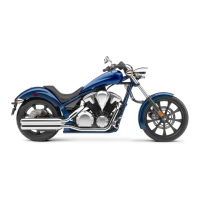
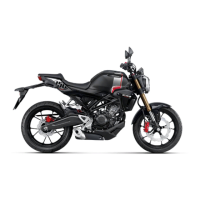




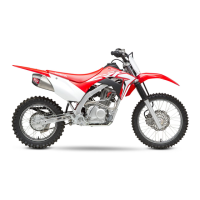

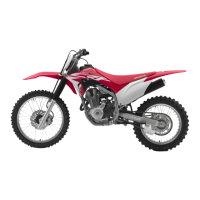

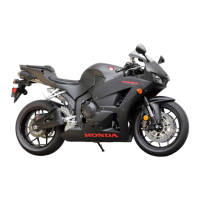
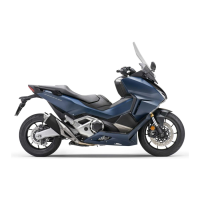
